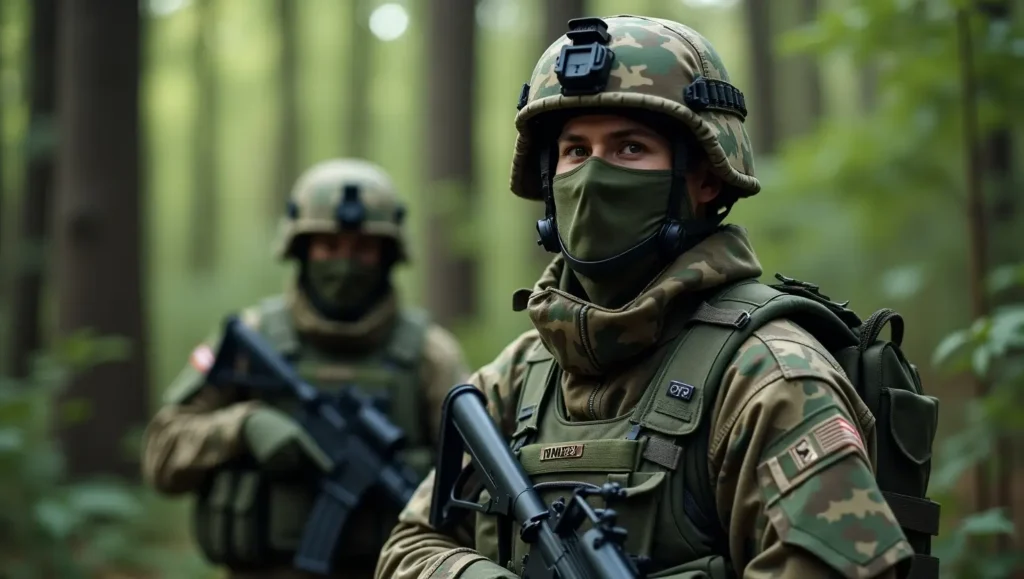Introduction
welcome to denzidesign.com digital camouflage, often recognized for its pixelated patterns, has revolutionized concealment techniques in both military and civilian applications. Unlike traditional camouflage, which relies on organic shapes, digital camo uses small, square pixels to blend seamlessly into different environments. But how does this technology work, and why is it more effective than older patterns? In this guide, we’ll break down the science, history, and application of digital camouflage.The Science Behind Digital Camouflage
How Digital Camo Works
Digital camouflage is designed to disrupt visual perception using small, pixelated shapes. These patterns reduce the ability of the human eye and digital sensors to detect outlines, making the wearer blend into the background more effectively. The concept is based on multi-scale camouflage, which works at different distances by breaking up recognizable shapes at both close and long range.
The Role of Fractal Geometry
Unlike traditional patterns, which mimic natural elements like leaves or branches, digital camouflage follows fractal geometry—mathematical patterns found in nature. This approach creates a blurring effect, tricking the brain into seeing a less defined outline.
Digital vs. Traditional Camouflage
| Feature | Digital Camouflage | Traditional Camouflage |
|---|---|---|
| Pattern | Pixelated, multi-scale | Organic, natural shapes |
| Effectiveness | Works at various distances | Works best at specific ranges |
| Adaptability | Used in multiple environments | Often environment-specific |
| Military Adoption | Widely used worldwide | Phasing out in many armies |
Evolution and Military Applications
Early Military Camouflage
Before the digital age, military forces relied on traditional camouflage patterns like woodland and tiger stripe. These were effective at close range but failed to adapt across different distances.
Introduction of Digital Camo
The first widespread use of digital camouflage appeared in the Canadian Forces (CADPAT) in the late 1990s. This success led to the adoption of U.S. Marine Corps MARPAT (Marine Pattern) and later the Universal Camouflage Pattern (UCP) for the U.S. Army. Today, many countries have transitioned to digital patterns due to their superior concealment properties.
The Rise of Multi-Scale Camouflage
New advancements, like multi-scale camouflage, enhance digital patterns by blending micro and macro elements. This results in improved concealment in diverse terrains, from dense forests to urban settings.
Civilian Uses of Digital Camouflage
Outdoor and Tactical Gear
Hunters, hikers, and airsoft enthusiasts use digital camouflage clothing to blend into natural surroundings. Brands now offer digital camo options in jackets, pants, and backpacks for outdoor enthusiasts.
Fashion and Streetwear
Beyond military applications, digital camo has influenced fashion trends. Designers incorporate pixelated patterns into urban wear, giving them a tech-inspired, futuristic appeal.
DIY and Digital Camouflage Generators
For those interested in creating custom patterns, digital camouflage pattern generators allow designers to craft personalized camo textures for clothing, graphics, or tactical gear.
The Future of Digital Camouflage
Adaptive Camouflage Technology
New research focuses on adaptive camouflage, which uses electronic textiles and color-changing materials to adjust in real-time to surroundings. This next-generation technology could make current camouflage patterns obsolete.
AI-Generated Camo Patterns
Artificial intelligence is now playing a role in camouflage development, generating optimized pixelated patterns based on terrain data and enemy detection models.
Conclusion
Digital camouflage has transformed the way we think about concealment, offering superior effectiveness over traditional patterns. Whether in military applications, hunting, or even fashion, its pixelated design provides a strategic advantage. As technology advances, we can expect even more innovations in the world of camouflage.
Call to Action
Are you interested in digital camouflage gear or custom designs? Explore our latest guides on camo trends and applications. Share your thoughts in the comments below!

